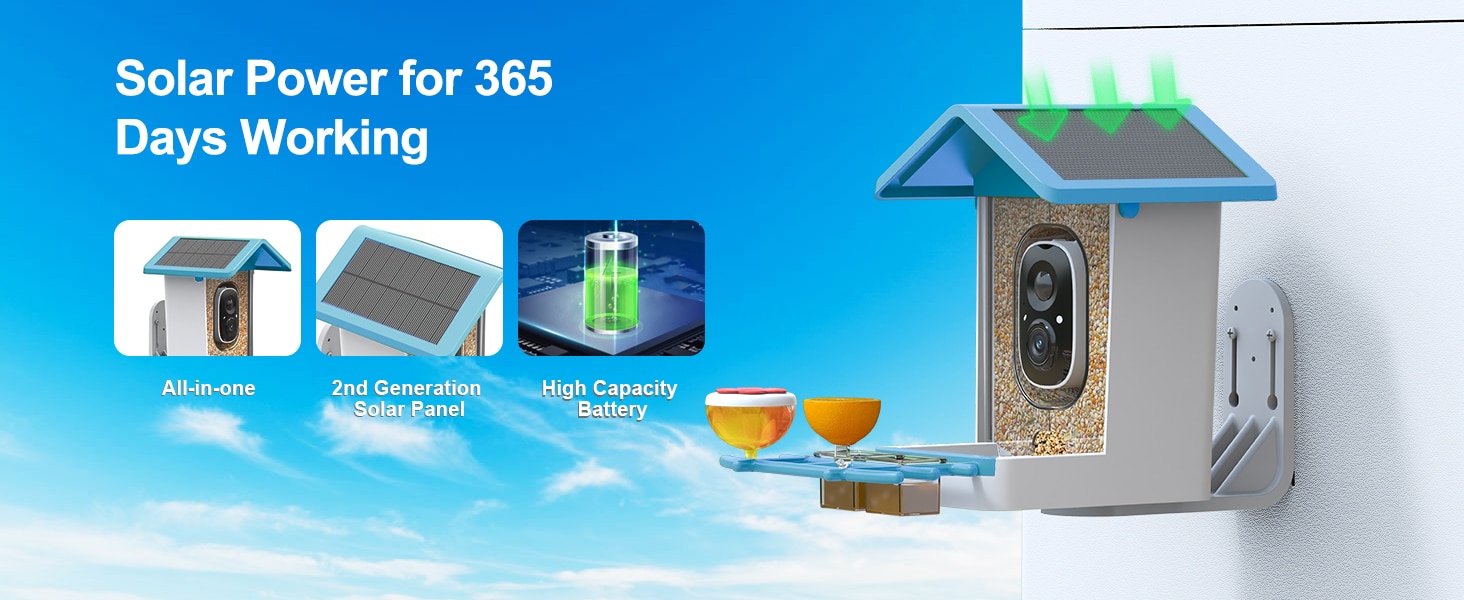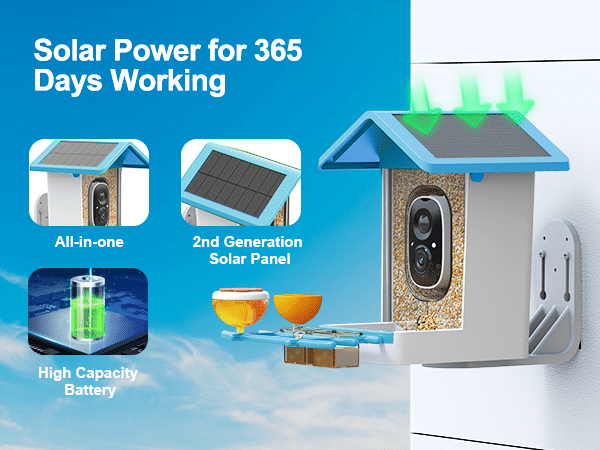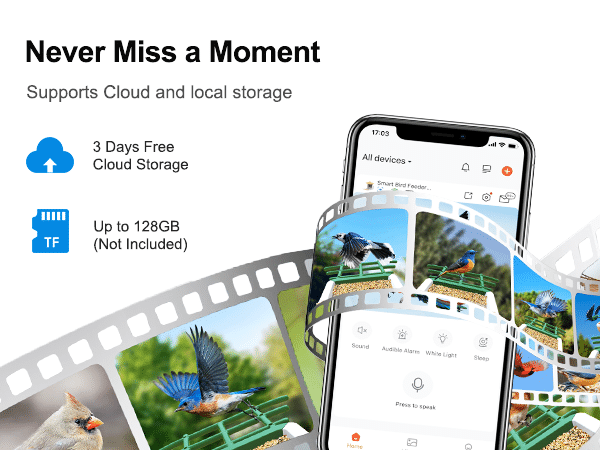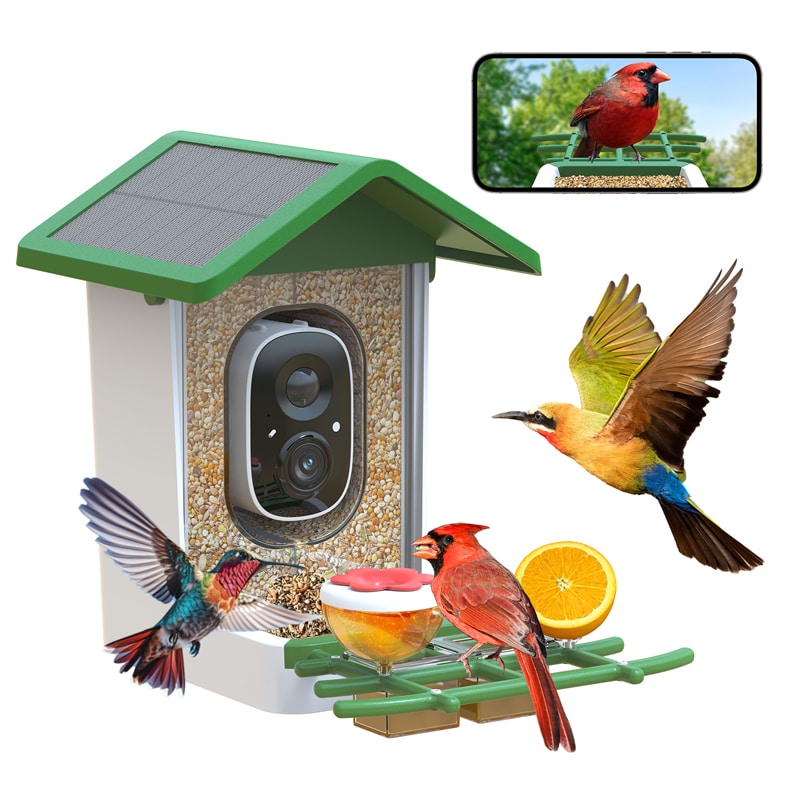If you’re trying to turn your backyard into a haven for feathered visitors, choosing the right bird feeder can make all the difference. With the growing popularity of solar bird feeders, many bird lovers are asking: are these new tech-powered feeders better than traditional ones? More importantly—do they attract more birds?
In this post, we’ll explore the differences between traditional feeders and solar powered bird feeders, and help you decide which is best for your garden, your lifestyle, and your birds.
How Traditional Bird Feeders Work
Traditional bird feeders have been the go-to for decades. They come in all shapes and sizes—tube feeders, tray feeders, hopper feeders—and are usually made from wood, plastic, or metal. These feeders rely on gravity to dispense seeds and need regular refilling and cleaning.
While they’re simple to use and relatively affordable, traditional feeders don’t offer features like cameras, lighting, or alerts. If you enjoy watching birds in real time or tracking visits, you’re limited to your physical presence and a pair of binoculars.
What Makes Solar Bird Feeders Different?
Solar bird feeders take things to the next level by combining traditional feeding with smart features powered by the sun. Most are equipped with small solar panels that charge an internal battery. This energy can be used to power built-in lights, cameras, or sensors.
But do these added features actually attract more birds?
The answer is—yes, often they do. Here’s why:
- Motion sensors trigger alerts when birds visit, allowing you to respond faster with fresh food or water.
- Smart solar bird feeders often include night lighting, helping birds locate the feeder at dusk or dawn when competition for food is high.
- Some models come with built-in cameras, allowing you to see what kinds of birds are visiting and adjust food types accordingly.
This smarter feedback loop creates a more inviting space for birds over time, especially when compared to feeders that are left unattended or unnoticed.
Do Birds Prefer One Over the Other?
Birds don’t care whether a feeder is traditional or solar—they care about food availability, safety, and consistency. But because solar powered bird feeders make it easier for humans to monitor and maintain the feeding station, birds often benefit from better care.
Features like camera alerts mean feeders are refilled more regularly. Solar-powered night lights make feeders visible longer, and weather-resistant designs keep food dry and fresh.
In short, solar bird feeders don’t attract birds because they’re techy—they attract birds because they help you become a better bird host.
Benefits of Solar Bird Feeders for Backyard Birders
1. Cleaner, Safer Feeding
Smart feeders are usually sealed and protected from rain, reducing mold or bacteria buildup. This creates a cleaner space, which birds are more likely to return to.
2. Consistent Monitoring
When paired with a camera, a smart solar bird feeders can notify you the moment a bird arrives, helping you keep the feeder clean and well-stocked at all times.
3. Educational & Entertaining
Solar bird feeders with cameras offer live footage and recordings, which are great for bird enthusiasts, children, and educators. They also help you learn which bird species frequent your area.
Which One Is Right for You?
If you’re a casual birdwatcher with a tight budget, a basic traditional feeder might be a good start. But if you want a more interactive, consistent, and tech-enhanced experience, solar bird feeders are well worth the upgrade.
They offer better visibility, smarter monitoring, and the potential to attract a wider range of birds through cleaner feeding environments and consistent care.
Our Recommendation: Firstrend Smart Solar Bird Feeder
For those ready to make the switch, the Firstrend smart solar bird feeder is a standout option. This weather-resistant feeder features:
- 2K HD camera for real-time birdwatching
- AI recognition of over 10,000 bird species via the VicoHome app
- Solar-powered battery system with 24/7 functionality
- Night vision and audio to hear chirps or even talk through the device
It’s a beautiful mix of nature and technology, perfect for anyone who wants a smarter, more engaging birdwatching experience.
Conclusion
When comparing traditional vs. solar bird feeders, it’s not just about feeding birds—it’s about how well you can care for them and enjoy the process. While both types can attract birds, solar powered bird feeders offer smarter features, better hygiene, and a more connected experience.
If you’re ready to take your backyard birding to the next level, a smart solar bird feeder like the one from Firstrend could be your best investment this year.









